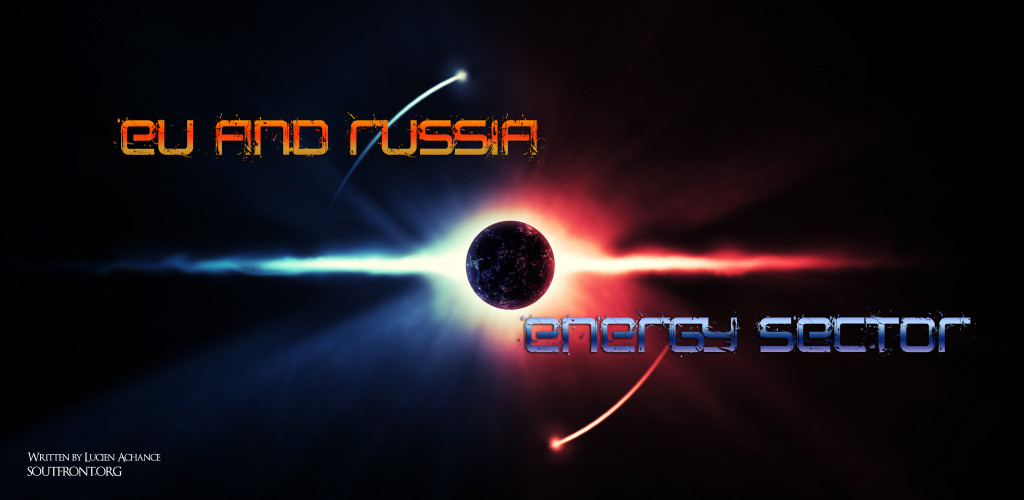
Relations of European Union and the Russian Federation spawn across different fields, but one that seeks more attention than others is the energy related one. Energy security is currently one of the most important and most disputed issues. At the heart of this matter lies an interdependence of a supplier, Russia, and the demand side, and that is Europe. In 2013, Russia supplied 39% of the gas, 33% of the crude oil and 29% of the solid fuels imported by the EU. On the other hand in 2013, crude oil, petroleum products and natural gas sales accounted for 68% of Russia’s total export revenues, with most of these exports heading to the EU. Energy dependency is mutual and both sides seek to loosen it, especially in the eve of recent geopolitical tensions. Of all the fossil fuels gas has a special place because of its cheapness, lack of alternatives for it, and a unique way of distribution by pipelines. Also, it has been a topic of various controversy and being thought of as the most politicized one.
Russia’s energy policy lies on signing long-term contracts, establishing joint-venture projects and the construction of two new pipelines that will carry Russian gas to the European market while bypassing transit countries. The most important aim of the external dimension of the EU energy policy is to ensure its energy security by diversifying its natural gas supply. In response to this kind of policy seen in building interconnections in EU’s pipe systems and investing in liquefied natural gas (LNG), Russia had signed agreements with China for deployment of 38 billion cubic meters of gas annually and will sign another one in 2016. Also. Russia and Pakistan have signed an agreement to construct the North-South gas pipeline. The project will be headed by RT Global Resources, a subsidiary of Russia’s state technologies corporation Rostec.
First, there have been several events that started to shift EU’s energy policy towards greater diversification. Gas crises in 2006. and to 2009. have shown what effect could transit countries like Ukraine have on final consumers. For Europe there was lack of gas, for Russia, lack of revenue. Speaking of witch, the main tool in Russia’s arsenal for conducting its energy strategy is its gas monopoly Gazprom. So, following the chain of events, Russia proposed the South Stream pipeline. European Commission responded and adopted the “Second strategic energy review – An EU energy security and solidarity action plan” in 2008. The text made plain the Commission’s desire to diversify sources of gas through a “southern corridor”. EU already had the “Nabucco” project, a 3 800-km pipeline connecting Central Asia to Central Europe via Turkey and Southern Europe, but it was shut down in 2013. Instead in its place fell the TANAP/TAP pipeline which are under development. Good news for Russia and South Stream, but unfortunately, Gazprom’s business strategy includes both the extraction of gas and its shipment to markets via pipelines in which the company holds a majority stake. That was against the set of directives known as the Third Energy Package, aimed at the liberalization and integration of national gas markets. In December 2014, the South Stream was canceled. Gazprom is currently under attack by antitrust law suits for unfair pricing and monopolistic behavior, and making conditions on latter distributions of gas.
In response to the Commission’s position on the South Stream project, Russian President Vladimir Putin and Turkish President Recep Tayyip Erdoğan jointly announced the cancellation of Gazprom´s South Stream project and its replacement by the Turkish Stream project at a joint conference in Ankara on 1 December 2014. Four pipes would carry 63 bcm of gas per year of witch three would go to Europe, and 16bcm to Turkey. There are currently some disputes about pricing and discounts between Gazprom and Botas. Positioning a gas hub on the Turkish-Greek border with a major gas storage facility in the Ipsala district of Turkey, where TANAP is also to end and connect with TAP would allow Gazprom to control the flow of gas while bypassing Ukraine and avoiding intergovernmental agreements that would come under the scrutiny of the European Commission. The connections between the gas hub and the final markets would be completed by interested EU Member States and by Balkan States. Another pipeline that could avoid Ukraine as the potential trouble zone would be the “Nord stream 2”. Here lies one difference between the to sides. While Russia’s policy is unanimous EU member states have different opinions on some matters. For example south-eastern countries who are in favor of Turkish stream are also against sanctions against Russia, Germany is in favor of Nord stream 2 but not the southern one and so on.
Globally speaking EU is against either of this two pipelines, arguing that Ukraine is just fine as it is like a transit country and in the meantime hoping to realize it’s own south pipeline via TANAP/TAP. Russia won’t or so it seems, renew its contract with Ukraine that expires in 2019. If Russia does build Turkish Stream and reroutes the gas currently transiting through Ukraine, there is likely to be a major geopolitical impact.
Ilija Acimovic
SouthFront





